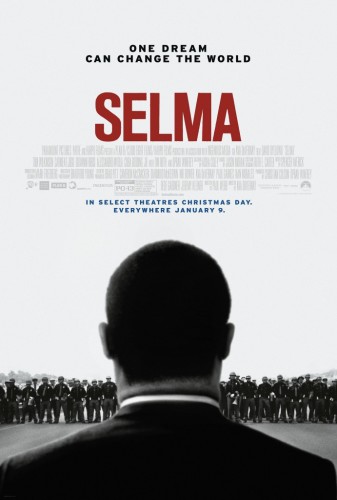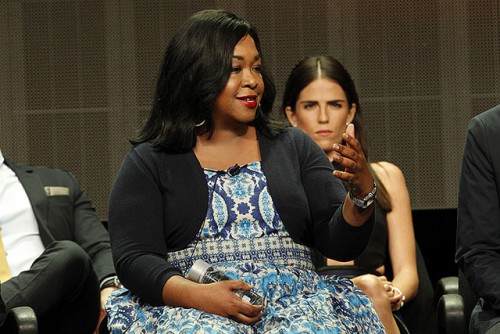This repost by Janell Hobson appears as part of our theme week on the Academy Awards.
Last year was a stellar one for Black women filmmakers. First, there was Amma Asante’s exquisitely filmed Belle (starring an impressive Gugu Mbatha-Raw), followed later by Gina Prince-Bythewood’s emotionally layered Beyond the Lights (also starring Mbatha-Raw). The year finally closed out with Ava DuVernay’s critically acclaimed historical drama, Selma.
However, while Belle was summarily dismissed by movie critics as a “black Jane Austen drama,” and Beyond the Lights received more favorable reviews but was nonetheless ignored at the box office, DuVernay has a real shot at becoming the first Black woman to be nominated for a Best Director Oscar (having already made history with her nomination at the Golden Globes). Of course, there is something to be said for women receiving critical acclaim when the films they direct focus on the lives of men, but that’s another story. Nonetheless, the acclaim she has received is absolutely earned.
(Editor’s note: DuVernay was not nominated.)
Selma is a rather subversive take on historical events: part sweeping epic drama, part intimate and domestic storytelling in its rendering of the voting rights march from Selma to Montgomery, Alabama in 1965 (led by Dr. Martin Luther King, Jr. and played in the film with an understated grace by David Oyelowo). DuVernay imbues this Civil Rights-era film with a black woman’s sensibility, which makes the storytelling all the richer.
There is the opening shot, featuring King practicing his acceptance speech for the Nobel Peace Prize, before he is joined by his wife Coretta (played by Carmen Ejogo in an uncanny resemblance to the late icon) fixing his tie. Here, an international milestone is seamlessly intertwined with the space of domestic intimacy, just as the following scene depicting the four girls in Birmingham decked out in their finest Sunday best—as they gossip about how Coretta Scott King does her hair while descending into a church basement—resonates on the most mundane level. Although we have the benefit of history, it is still jarring when the bomb explodes, and, as occurs throughout the film, each death is doled out in slow motion, the camera (aesthetically positioned by the accomplished cinematographer Bradford Young to capture the brilliance of dark skin) refusing to turn our collective eyes away from the bloodshed and the casualties of “racial progress.”
DuVernay has said in interviews that when she inherited Paul Webb’s screenplay, she altered it to decenter its focus on President Lyndon B. Johnson (even though the controversy surrounding the film managed to once again re-center the story on white male power and its portrayal). Rather than criticize the director for shifting her gaze away from whiteness (or for getting certain historical details wrong), it may be more useful to consider the difference a woman behind the camera—and a Black woman in particular—brings to a motion picture. Because of the rewrite, we not only get a redirection on King and how his Southern Christian Leadership Conference group came into conflict with the younger Student Nonviolent Coordinating Committee, but women are also added to the picture, including movement participants like Freedom Rider Diane Nash (played by Tessa Thompson), Amelia Boynton (Lorraine Touissant) and Annie Lee Cooper (Oprah Winfrey). They are still marginal to the main story, but at least they are visible and part of the grassroots movement critical to King’s leadership.
We also see certain feminist approaches: from how the movement men can descend onto a woman’s home and make themselves quite comfortable as their very masculine dominance takes over her kitchen space (a subtle critique of the ways progressive men constantly rely on and exploit women’s labor, all wrapped up in the warmth of black Southern domestic comfort) to a scene featuring Amelia Boynton and Coretta Scott King discussing the struggles of activism and the challenge of maintaining hope (a scene Touissant has noted was DuVernay’s own conscious attempts at passing the Bechdel Test by including a scene where women are not talking about men). Through Coretta’s story, DuVernay also highlights how the iconic hero that we celebrate through King does not translate to admirable husband and father. King’s infidelities, however, are included not to tarnish his image but to undergird the real difficulties of committing to both a political movement and the personal sphere. King’s political involvement (including long stays away from home) also brings the constant fear of death, a fear Coretta quietly yet persistently underscores throughout her scenes.
More than anything, Selma is what we get when we intersect the personal with the political, the epic with the intimate, the historical with the present day (e.g. because King’s speeches were off limits, what we also get in the film are double entendres of what the Selma movement meant for 1965 and what present-day struggles mean for us here in 2015).
While the film’s budget is tiny by Hollywood standards ($20 million), what DuVernay does with the film is a real triumph in not only quality filmmaking but in accomplished storytelling, where black people and their allies stand in all their brilliant humanity and where women’s stories hold equal weight against the heavyweight often accorded men’s histories. Let us hope her triumphs will open the doors wider for other women filmmakers.
Of course we may find solace on smaller screens, where diversity reigns and where Shonda Rhimes dominates Thursday television with her Black women leads and multiracial casting. Nonetheless, there is a power that is felt when viewing images in a much larger medium with its expansive and colossal screen and booming soundtrack. DuVernay has shown why Black women still matter on big screens and why they matter more so behind the camera.
Janell Hobson is an associate professor of Women’s, Gender and Sexuality Studies at the University at Albany, State University of New York. She is the author of Body as Evidence: Mediating Race, Globalizing Gender and Venus in the Dark: Blackness and Beauty in Popular Culture, and a frequent contributor to Ms.

















